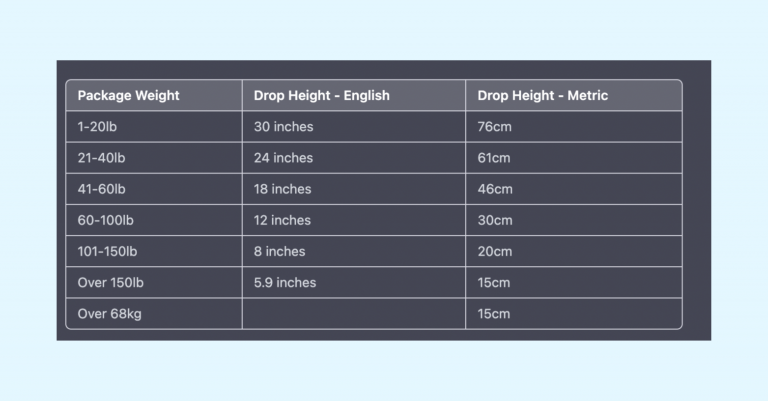Packaging inspection is a critical process for importers who outsource products from abroad. It involves a thorough examination of the packaging materials and designs used to protect and transport goods, to ensure that they meet quality and safety standards. In this blog, we will explore the different types of packaging inspection tests, the factors to consider when performing them, and the benefits of using a professional inspection service like Tetra Inspection.
Types of Packaging Inspection
Visual Inspection
Visual inspection is a type of packaging inspection that involves checking the packaging materials and designs for defects or damages that may affect their integrity or functionality. This includes examining the packaging for any tears, punctures, or other signs of wear and tear, as well as checking that the design is suitable for the product being transported.
Dimensional Inspection
The dimensional inspection involves measuring the dimensions and tolerances of the packaging materials to ensure that they conform to the specifications provided by the importer or the regulatory authorities. This includes checking the size, weight, thickness, and other dimensions of the packaging materials to ensure that they meet the required standards.
Mechanical Testing
Mechanical testing is a type of packaging inspection that involves subjecting the packaging materials to various mechanical stresses and strains to test their strength and durability. This includes testing the materials for compression, impact resistance, and vibration resistance, to ensure that they can withstand the rigors of transport and handling.
Material Testing
Material testing involves analyzing the composition and properties of the packaging materials to ensure that they are suitable for the product being transported. This includes testing the materials for their resistance to moisture, temperature, and other environmental factors that may affect the product’s quality and safety.
Labeling Inspection
Labeling inspection involves checking the packaging labels for accuracy and completeness. This includes verifying that the labels contain the correct product information, such as the name, description, and ingredients, as well as any required warnings or instructions.
Factors to Consider in Packaging Inspection

Product Type and Characteristics
The type and characteristics of the product being transported can affect the choice of packaging materials and the type of packaging inspection required. For example, fragile or perishable products may require more rigorous inspection and testing to ensure their safety.
Regulatory Requirements
Different countries and regions may have different regulatory requirements for packaging materials and designs. It is important to ensure that the packaging meets the required standards to avoid any legal or regulatory issues.
Packaging Materials
The choice of packaging materials can affect the performance and durability of the packaging. It is important to choose the right materials for the product being transported and to test them to ensure their suitability.
Environmental Conditions
The environmental conditions during transport and storage can affect the performance of the packaging materials. It is important to test the materials under different environmental conditions to ensure their durability and effectiveness.
Shipping and Handling
The shipping and handling methods used for transporting the products can affect the performance of the packaging materials. It is important to test the materials under different shipping and handling conditions to ensure their durability and effectiveness.
Packaging Inspection Process
The packaging inspection process involves several steps, including preparing for inspection, conducting the inspection, reporting and documenting findings, and taking corrective actions and follow-up.
Preparing for Inspection
Before conducting the inspection, it is important to establish clear inspection criteria and procedures and to ensure that the necessary equipment and tools are available. This includes preparing a checklist of the tests to be performed and ensuring that the inspectors are trained and certified.
Conducting the Inspection
During the inspection, the inspectors will perform the required tests on the packaging materials and designs, and record the results. This includes using various testing equipment and techniques to evaluate the packaging materials for defects, damages, and other issues.
Reporting and Documenting Findings
After conducting the inspection, the inspectors will document their findings and provide a report to the importer. This report will outline the results of the inspection and identify any issues or concerns that were found during the inspection process. It may also include recommendations for corrective actions that need to be taken to address any issues.
Taking Corrective Actions and Follow-up
If any issues or concerns are identified during the inspection process, it is important to take corrective actions to address them. This may involve repairing or replacing damaged packaging materials, adjusting the packaging design, or taking other steps to ensure that the packaging meets the required standards. It is also important to follow up on the corrective actions to ensure that they have been effective and that the packaging is safe and effective for transporting the products.
Carton Drop Test Standard: Everything You Need To Know

The carton drop test is a crucial step in ensuring that products and their packaging remain intact during transit and handling. Here’s what you need to know about the carton drop test standard:
Scope:
- The carton drop test applies to all products with regular master cartons.
Carton Drop Test Methods:
- ISTA 1A is the widely adopted standard for carton drop testing.
- The weakest corner of the carton is tested along with 3 edges and 6 faces.
- The products must be checked for defects before testing to ensure normal functionality and packaging.
Drop Test Height Standards:
- ISTA 1A is suitable for package weights of 68kg or less.
- For package weights of 1-20lb, the drop height is 30 inches in the English system and 76cm in the Metric system.
- ISTA 1B is suitable for package weights over 68kg.
- For package weights over 150lb, the drop height is 5.9 inches in the English system and 15cm in the Metric system.
Checking after Drop Test:
- Open the carton to verify the condition of products and packaging inside the carton.
- Pass: No damage or breakage to packaging. No functionality or safety issues found with the product.
- Fail: Deformation, scratches, dents, or other damage to products inside. Products are not functional after the drop test.
- Pending: Damage to export cartons/inner/retail boxes, but the product remains intact.
Carton drop testing should be performed as part of the pre-shipment inspection, especially for the first shipment. By including it in the pre-shipment inspection, the likelihood of carton rupture and damage to products and packaging during transit and handling can be reduced.
How Tetra Inspection Can Help
Tetra Inspection is a professional inspection service that specializes in providing packaging inspection services for importers and exporters. Our team of experienced inspectors uses state-of-the-art testing equipment and techniques to evaluate the quality and safety of packaging materials and designs. We can provide a wide range of packaging inspection services, including visual inspection, dimensional inspection, material testing, and labeling inspection.
Using our services can help you to identify any issues or concerns with your packaging materials and designs, and take the necessary corrective actions to ensure their safety and effectiveness. Our services can also help you to comply with regulatory requirements and avoid any legal or regulatory issues that may arise from non-compliance.
In conclusion, Packaging inspection is a critical process for importers who outsource products from abroad. It involves a thorough examination of the packaging materials and designs used to protect and transport goods, to ensure that they meet quality and safety standards. By understanding the different types of packaging inspection tests, the factors to consider when performing them, and the benefits of using a professional inspection service like Tetra Inspection, importers can ensure the safety and effectiveness of their packaging materials and designs, and protect their businesses from legal and regulatory issues.

